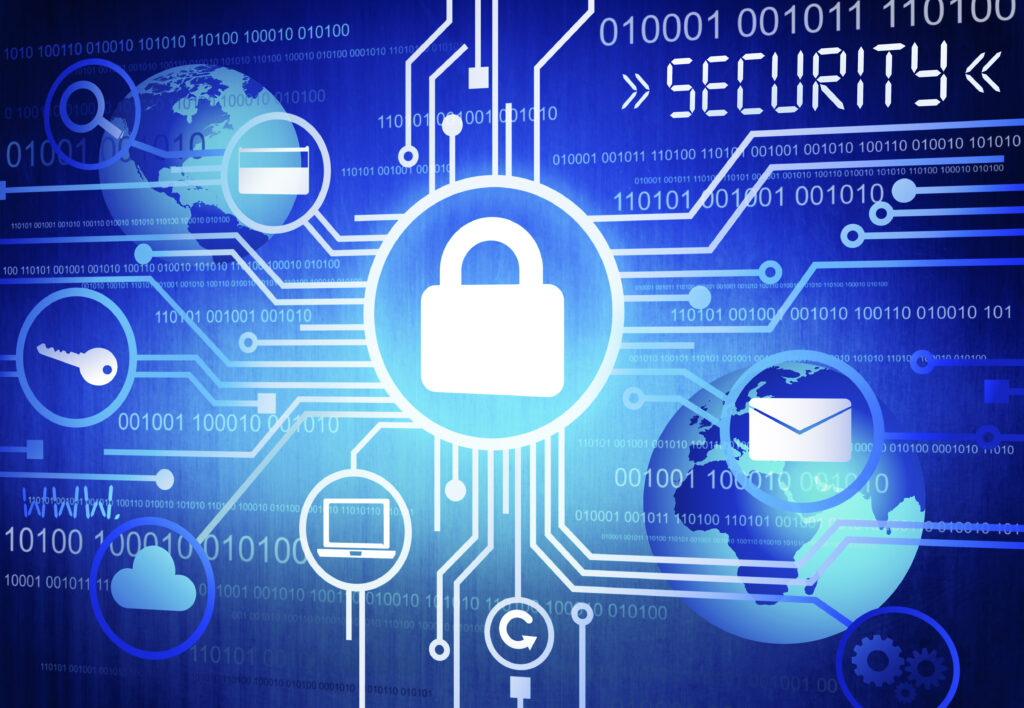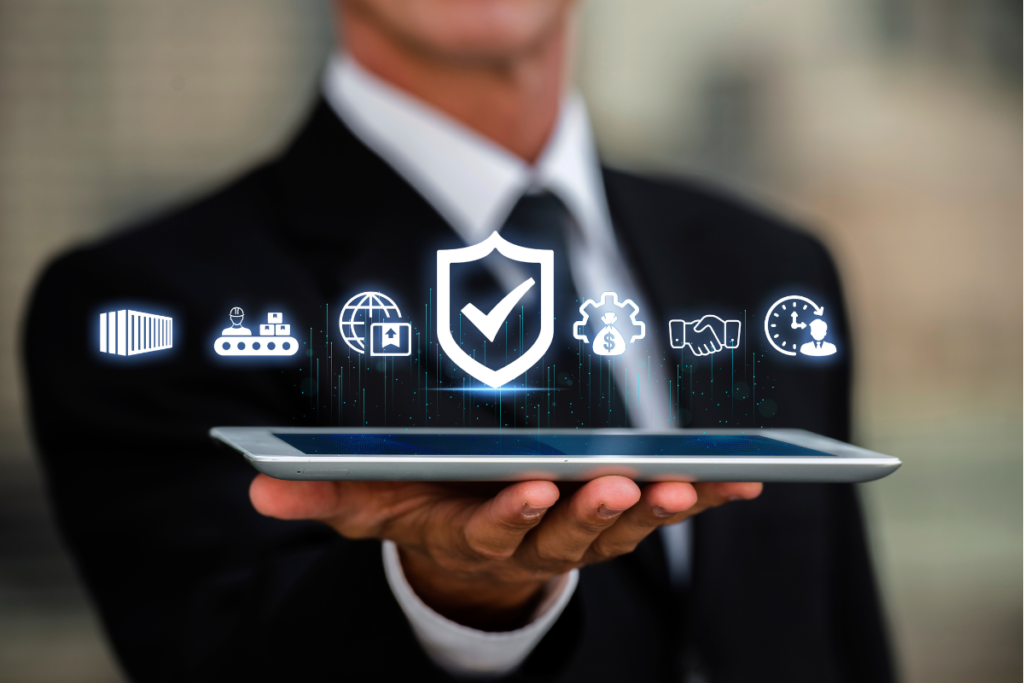Companies of every size need strong attention to measures and improve business security. All organizations ranging from startups to enterprises need to prioritize safeguarding their assets along with personnel data and customer information. Security breaches along with cyberattacks and physical threats generate financial losses together with damaging organizational reputation and lead to potential legal penalties.
In this guide, we’ll explore the 21 Tips to Improve Business Security and Prevent Cyber Threats. We’ll cover physical security, cybersecurity, employee awareness, data protection, and risk management strategies to help safeguard your business from threats.
Table of Contents
ToggleSteps to Improve your Business Security
1. Strengthen Physical Security
Physical security is the first defense against unauthorized access, theft, and vandalism. Businesses must secure their premises, assets, and employees using modern security measures.
Step 1: Install High-Quality Surveillance Systems
Business security is enhanced through proper placement of CCTV surveillance which deters criminal activity while tracking all business transactions. Look for:
- High-resolution (1080p or higher) cameras
- Night vision and motion detection
- Cloud storage for remote access
- The system uses AI analytics capabilities to find suspicious activities.
Check camera videos regularly to secure safe backup storage for potential incidents.
Step 2: Implement Access Control
Step 2: Implement Access Control Systems
A business needs the following systems to stop unapproved access:
Keycard or biometric access (fingerprint, retina, or facial recognition)
The establishment maintains Vistor logbooks as well as digital check-in systems for tracking entry.
Security guards or receptionists for manual verification
Businesses need to block access to their high-security spaces which include data centers as well as finance offices.
Step 3: Use Alarm Systems
The current security systems include immediate notifications which activate when someone tampers with the system. Install:
- Intrusion detection alarms
- Glass break sensors for windows
- Installation of detectors that alert about fire outbreaks as well as smoke incidents and gas leaks.
- The system needs to integrate 24/7 alarm monitoring services which provide rapid alerts.
Step 4: Secure Doors and Windows
The main access points which burglars exploit are areas of vulnerability in buildings. To reinforce security:
- Every entry point should receive reinforced locks inside heavy-duty doors.
- Security films should be applied to windows to stop them from breaking during unwanted events.
- Smart locks on your property should warn you whenever someone accesses them without permission.
Step 5: Implement Security Patrols
Physical security patrols offer useful security benefits to offices combined with warehouses and retail establishments. Options include:
- Hiring professional security personnel
- Using AI-powered robotic patrols
- Implementing night guard shifts
- Security risks become lower through sustained patrols because they detect suspicious activities at early stages.
2. Improve Cybersecurity
Cyber threats like hacking, ransomware, phishing, and data breaches are rising. Cybersecurity must be a top priority for businesses of all sizes.
Step 6: Use Strong Password Policies
Weak passwords make it easy for hackers to gain access. Strengthen security by:
- Enforcing at least 12-character passwords with numbers, symbols, and uppercase letters
- Requiring multi-factor authentication (MFA)
- Using password managers to store credentials securely
- Changing passwords every 90-180 days
Step 7: Install Firewalls and Antivirus Software
Firewalls together with Antivirus software represent the seventh step in the cybersecurity best practices. A firewall system protects company infrastructure from unauthorized access, while antivirus software safeguards data from malware and ransomware intrusion.
- Use enterprise-grade firewalls
- Every organization device requires antivirus software installation.
- Maintain regular software updates because this allows identification of security weaknesses.
Step 8: Encrypt Sensitive Data
Data encryption creates an impossible situation for hackers because it makes their stolen information unreadable.
- Every communication through emails and messages requires the implementation of end-to-end encryption protocols.
- The business should implement encryption to protect stored information that includes customer data and financial records.
- Implement secure cloud storage solutions
Step 9: Conduct Regular Security Audits
Security audits enable organizations to detect system weaknesses which hackers typically discover late. Regularly:
- The organization should perform penetration testing which simulates hacker attacks.
- Perform vulnerability scanning operations on network infrastructure together with server components.
- Screen system logs to detect any questionable actions

3. Educate Employees on Security Best Practices
Employees are one of the biggest security risks if they are unaware of potential threats. Regular training and policies reduce security risks.
Step 10: Conduct Security Training
Workers tend to pose the greatest safety risk to a system. Employees should receive mandatory cybersecurity and physical security training on:
- How to handle confidential information
- Recognizing phishing emails and social engineering scams
- Safe password practices and device security
Step 11: Implement a Security Policy
Create a business security policy outlining:
- Acceptable use of company devices
- Rules for accessing sensitive data
- Steps to follow in case of a security breach
Step 12: Encourage Reporting of Suspicious Activity
Encourage employees to report security concerns via:
- Regular team security briefings
- Anonymized reporting tools
- Direct contact with security personnel
4. Protect Customer and Business Data
Data breaches can lead to financial loss and reputational damage. Protect sensitive information with secure storage, backups, encryption, and restricted access to ensure data security and compliance.
Step 13: Backup Data Regularly
Avoid data loss by:
- Automated backup systems that occur daily, weekly and monthly basis
- Physical storage of backup data should occur at secure cloud platforms as well as non-connected sites.
- Implementing disaster recovery plans
Step 14: Restrict Data Access
Application of these protective measures combines with encryption keys to limit both data access as well as confidential file access.
- Role-based access controls (RBAC) function to deliver employees at most necessary data (fusion)
- Multi-factor authentication (MFA) for login security
- Data logging and monitoring
Step 15: Use Secure Payment Systems
The handling of financial transactions requires your business to implement these steps:
- Implement PCI DSS-compliant payment processors
- Payment gateways which leverage encryption must be used for secure transactions.
- Customers should receive two-step authentication support for their transactions

5. Manage Third-Party Risks
Vendors and partners can introduce security vulnerabilities. Minimize risks by vetting third parties, enforcing security policies, and monitoring access to your systems and data.
Step 16: Vet Vendors and Partners
Security vulnerabilities may appear through third-party vendors who enter your system. Conduct:
- Background checks before signing contracts
- Security assessments of their policies
- Ongoing monitoring to ensure compliance
Step 17: Require Non-Disclosure Agreements (NDAs)
Protect business secrets and customer data by requiring:
- Strict confidentiality contracts
- Non-Disclosure Agreements (NDAs)
6. Develop an Incident Response Plan
A well-prepared incident response plan ensures businesses can quickly detect, contain, and recover from security breaches or emergencies. Regular testing and updates help minimize damage and downtime.
Step 18: Create a Business Continuity Plan
Anticipate disasters of computer system intrusion through natural catastrophes and other emergency events by following these steps:
- Establishing emergency contact lists
- Defining roles and responsibilities for incident management
- The organization should establish alternative work procedures that permit staff to operate remotely.
Step 19: Test and Update Response Plans
The implementation of security drills and tabletop exercises must become a regular practice for several reasons.
- Identify weaknesses in your plan
- Your organization must achieve faster incident response during actual attacks.
7. Comply with Legal and Industry Regulations
Following security laws and industry regulations prevents legal penalties and protects customer trust. Businesses must stay updated on compliance requirements like GDPR, CCPA, and HIPAA to ensure data protection.
Step 20: Follow Data Protection Laws
Ensure your business complies with:
- Businesses need to comply with GDPR (General Data Protection Regulation) whenever they handle data belonging to EU customers.
- Businesses that operate in California with customers there need to comply with CCPA (California Consumer Privacy Act).
- HIPAA (Health Insurance Portability and Accountability Act) for healthcare-related businesses
Step 20: Stay Compliant with Security Regulations
Businesses must follow government and industry-specific regulations such as:
- GDPR (General Data Protection Regulation) for EU businesses
- CCPA (California Consumer Privacy Act) for US-based businesses
- HIPAA (Health Insurance Portability and Accountability Act) for healthcare organizations
Use legal and IT security professionals to keep abreast of regulations while preventing large penalty payments.
Conclusion
Business security is not a one-off task; it demands ongoing vigilance, proactive measures, and staff awareness to keep up with emerging threats. Through the adoption of stringent physical security protocols, effective cybersecurity tactics, staff education, data safeguarding techniques, management of third-party risks, planning for incident response, and adherence to legal standards, companies can reduce risks, avert losses, and foster long-term resilience.
Putting money into security safeguards your assets, employees, and customers while also enhancing your business’s reputation and credibility. A safe business is a thriving business, so act now to protect your future.









